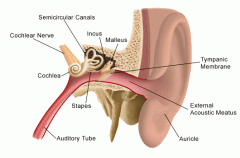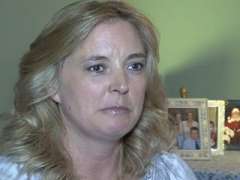Superior Semicircular Canal Dehiscence
Find your care
Our head and neck surgeons consistently rank among the best in the nation. To find out more about our services, call 310-206-6688.
What is Superior Semicircular Canal Dehiscence?
Superior Semicircular Canal Dehiscence (SSCD) is caused by a tiny hole that develops in one of the three canals inside the ear. Healthy individuals have two holes or "mobile windows" in their dense otic capsule bone, but those with SSCD have developed a third hole.
Symptoms
The thinning or absence of bone in the semicircular canal triggers vertigo, hearing loss, disequilibrium and other balance and auditory symptoms. A common symptom of SSCD is the abnormal amplification of internal body sounds such as heartbeats and eye movements. SSCD is considered a rare disease and the exact cause is unknown. The condition is usually diagnosed in middle age, although it has been seen in small children.
Additional symptoms include:
-
Pressure sensitivity

- Sound sensitivity
- Fatigue
- Headache/migraines
- Tinnitus – high pitched ringing in the ears
The symptoms of SSCD can get worse when a patient experiences extended episodes of coughing, sneezing or blowing of the nose. Sometimes hearing one’s own voice can also aggravate SSCD.
Testing
Physicians use several auditory tests to detect and evaluate SSCD, including high-resolution computed tomography (CT) and vestibular-evoked myogenic potentials (VEMP). CT scans of the temporal bone are crucial to diagnose, confirm and locate SSCD. VEMP is used to test the responses of the inner ear and confirm a suspected presence of SSCD. VEMP is important in determining if it is SSCD that is causing conductive hearing loss rather than a true ossicular disease.
Treatments

For patients with mild to no symptoms, it is best to take a conservative approach and simply avoid symptom triggers. Patients with primarily pressure-induced symptoms can have a tympanostomy tube placed, but this is not effective for all patients. Surgical repair of SSCD includes skull-base middle-fossa craniotomy for canal-repair resurfacing, plugging or capping the bony dehiscence. There are always risks associated with surgery, but most patients report a high level of improvement after surgical treatment.
Karrie's Story: The Woman Who Heard Too Much
Meet Our Experts
UCLA Head and Neck Surgery
Quinton Gopen, M.D.
Assistant Professor
(310) 206-6688
UCLA Neurosurgery
Isaac Yang, M.D.
Assistant Professor
(310) 267-2621